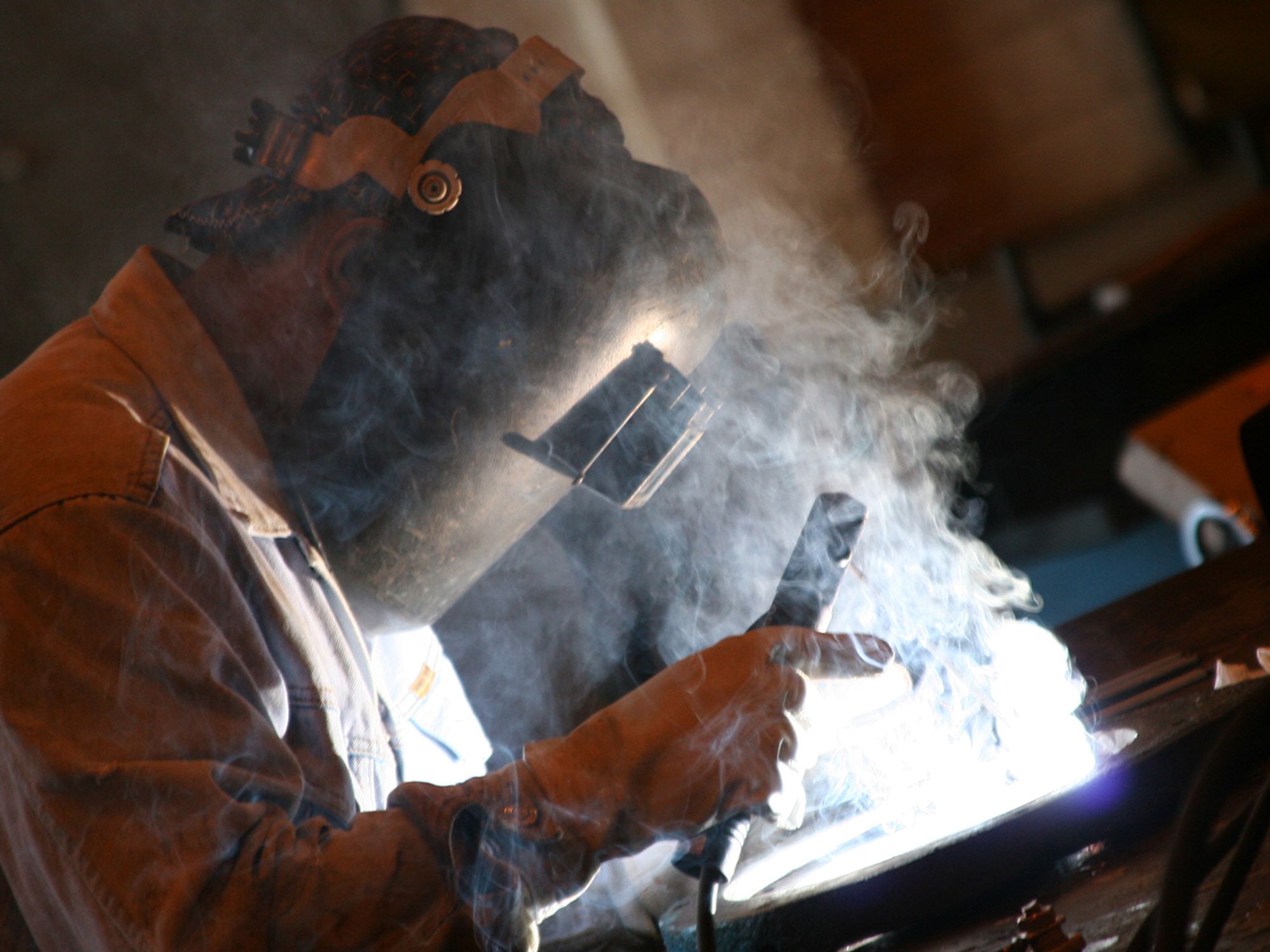Fumes and gases

- Hot work can expose workers to many types of fumes and gases, with a corresponding array of health hazards.
- Preventing and avoiding these health hazards depends on the work circumstances, including materials, location, equipment, and practices.
The many hazards associated with welding operations include exposure to several types of air contaminants: metal fumes, gas byproducts, and shielding gases. These contaminants can harm workers’ health. Fortunately, there are ways to reduce or eliminate them.
Related regulations
The Occupational Safety & Health Administration (OSHA)) and the American National Standards Institute (ANSI) both have standards that can be relevant to fumes and gases encountered during hot work:
- 29 CFR 1910 Subpart Q — Welding, Cutting and Brazing.
- 29 CFR 1910.1200 — Hazard communication.
- 29 CFR 1926.55 — Gases, vapors, fumes, dusts, and mists.
- 29 CFR 1926.59 — Hazard communication.
- 29 CFR 1926.103 — Respiratory protection.
- 29 CFR 1926 Subpart J — Welding and cutting.
- 29 CFR 1926.1126 — Chromium (VI).
- 29 CFR 1926.1127 — Cadmium.
- ANSI Z49.1-1967 — Safety in Welding and Cutting.
Types of fumes and gases
During welding and cutting operations, metal fumes may be released, gas byproducts may be formed, and shielding gases used during the process may escape into the air.
Metal fumes produced during hot work depend on the circumstances of the operation —the metal, metal preservatives, electrode, or filler rod used. Some common welding fumes that can have negative health effects include: barium, beryllium, cadmium, chromium, copper, fluoride, iron, lead, magnesium, manganese, and zinc.
Gases are also released during welding operations. These gases can form in many ways. Carbon monoxide, for example, can form when carbon dioxide shielding gas is used in gas metal arc welding. Gas byproducts formed during welding may include: nitric oxide, nitrogen dioxide, carbon monoxide, ozone, phosgene, hydrogen, fluoride, and carbon dioxide.
Certain other gases are not byproducts but used as shielding gases supplied during the welding process, including: argon, helium, nitrogen, and carbon dioxide.
Health effects
Fume and gas exposure can cause an array of health effects, both short- and long-term. Acute exposure to welding fumes and gases can result in eye, nose, and throat irritation; dizziness; and nausea. Workers should be alert for these symptoms and leave the area if any develop. Prolonged exposure to welding fumes may cause lung damage and various types of cancer, including lung, larynx, and urinary tract.
Depending on the fume or gas, health effects may also include metal fume fever, stomach ulcers, kidney damage, and nervous system damage. For example, prolonged exposure to manganese fumes can cause Parkinson’s-like symptoms.
Some gases, such as helium, argon, and carbon dioxide, displace oxygen in the air. This can lead to suffocation, particularly during welding in enclosed spaces. Carbon monoxide gas can form, posing an asphyxiation hazard.
Factors affecting exposure
Factors that affect exposure to welding fumes or gases depend on a number of circumstances:
- Type of welding process,
- Welder’s work practices,
- Base metal and filler metals used,
- Composition of the welding rod,
- Location (outside or in an enclosed space), and
- Air movement and ventilation.
Minimizing health hazards from fumes and gases
While there are a lot of health hazards associated with fumes and gases from hot work, there are also many ways to control or eliminate them.
Before welding begins, some hazards can be prevented by:
- Performing atmospheric tests,
- Cleaning welding surfaces of any coating that could create a toxic exposure,
- Understanding the risks and symptoms associated with the materials to be used, and
- Substituting a lower fume-generating or less toxic welding type or consumable (when feasible).
Workers can reduce their risks with safety equipment, including:
- Using local exhaust systems to remove fumes and gases from workers’ breathing zone,
- Keeping fume hoods and vacuum nozzles close to the plume source, and
- Wearing respiratory protection if ventilation does not reduce fumes and gases to safe levels.
Workers can also reduce their risks with their work practices, including:
- Positioning themselves upwind to avoid breathing welding fumes and gases,
- Using the movement of fresh air to reduce fume and gas levels in the work area,
- Not getting too close to the fume or gas plume, and
- Knowing the symptoms of overexposure to fumes and gases and getting out of the area if they develop.
